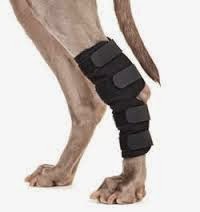Dogs

- What Does A Pet Rehabilitation Center Do?
By Julia Williams When age or injury makes it more difficult for your dog or cat to get around, many pet owners assume that nothing much can be done. However, thanks to new treatment options and modern technology, our pets don't have to hobble about...
- Understanding Canine Arthritis
By Ruthie Bently As our canine companions get older they are susceptible to many of the same conditions of aging that affect humans; arthritis is one of these conditions. A dog’s skeletal system is comprised of not only their bones, but also the tendons...
- Hip Dysplasia Treatment
The hip joint is a ball and socket kind of joint, where the end of the thigh bone fits perfectly into the socket of the hip. When suffering from hip dysplasia the head of the thigh bone does not insert into the socket properly. The normal functioning...
- Shoulder Injuries In Dogs
Shoulder injury in dogs is a very common occurrence, as dogs can be quite energetic and hence, sometimes may overdo themselves. An important fact about dogs is that they do not have collarbones connecting to the shoulder blades. Instead, the humerus...
- Hip Dysplasia Symptoms In Dogs
Hip dysplasia in dogs is one such disease that occurs as a result of abnormal development of the hip joint. Normally, the hip joint of a dog is a ball and socket kind of joint where the end of the thigh bone fits well into the socket of the hip....
Dogs
Dogs and Joint Pain - Natural Relief

Dogs who suffer from joint pain generally favor a certain leg, limp, or walk stiffly. They may be hesitant to climb stairs, run, or jump. From there it progresses to overt lameness-holding the limb funny, or holding the limb up.
Types of Joint Pain
The two major categories of joint pain are developmental and degenerative problems. With developmental problems you have things like hip or elbow dysplasia, where the joint does not develop properly in a number of different ways. Degenerative problems cover several areas. The most common are ligament problems, where ligaments degenerate over time. In general, increased size and weight are determinate factors related to joint problems in pets. Bigger dogs are the poster children for joint problems.
Rehabilitation/Physical Therapy
Physical therapy with professional rehab therapists is really exploding. Many private practices and academic centers have these employees on staff in their practices. The therapy can include underwater treadmills, electric stimulation, and ultrasound therapy. Everything we humans think about physical therapy is being applied to our pets.
Surgery
On the surgical side, more minimally invasive procedures that employ different types of injections or replacements of tissues. Surgery is the most expensive treatment, and sometimes the only option. Surgery used to be more common, however today that is not the case because more options for treatment are available.
What you can do to help prevent joint injuries in your dog.
Keep your dog at the right weight and in good body condition throughout its life. Feed your dog good food and keep them lean. Always provide your pet with plentiful exercise. Keeping your pet in good condition is key. If you are buying a puppy, especially a pure breed, investigate known health problems in that breed. If you don't care about the breed, purchase a mutt. With a mutt, there is less chance of joint related problems. The genetic diversity seems to limit joint related problems overall.
Dog owners can help make pet companions more comfortable with soft bedding, massage, gentle play, and by providing ramps to make it easier for pets to get up and down from high places. Some pets can benefit from shedding excess pounds. Shedding pounds can also reduce their risk of weight related issues, such as heart disease and diabetes. Dogs and cats from 1 to 100 pounds or more can experience relief with a natural plant base homeopathic blend that contains ingredients historically used to help pets with the discomfort, swelling, and stiffness associated with pet joint pain.
- What Does A Pet Rehabilitation Center Do?
By Julia Williams When age or injury makes it more difficult for your dog or cat to get around, many pet owners assume that nothing much can be done. However, thanks to new treatment options and modern technology, our pets don't have to hobble about...
- Understanding Canine Arthritis
By Ruthie Bently As our canine companions get older they are susceptible to many of the same conditions of aging that affect humans; arthritis is one of these conditions. A dog’s skeletal system is comprised of not only their bones, but also the tendons...
- Hip Dysplasia Treatment
The hip joint is a ball and socket kind of joint, where the end of the thigh bone fits perfectly into the socket of the hip. When suffering from hip dysplasia the head of the thigh bone does not insert into the socket properly. The normal functioning...
- Shoulder Injuries In Dogs
Shoulder injury in dogs is a very common occurrence, as dogs can be quite energetic and hence, sometimes may overdo themselves. An important fact about dogs is that they do not have collarbones connecting to the shoulder blades. Instead, the humerus...
- Hip Dysplasia Symptoms In Dogs
Hip dysplasia in dogs is one such disease that occurs as a result of abnormal development of the hip joint. Normally, the hip joint of a dog is a ball and socket kind of joint where the end of the thigh bone fits well into the socket of the hip....
